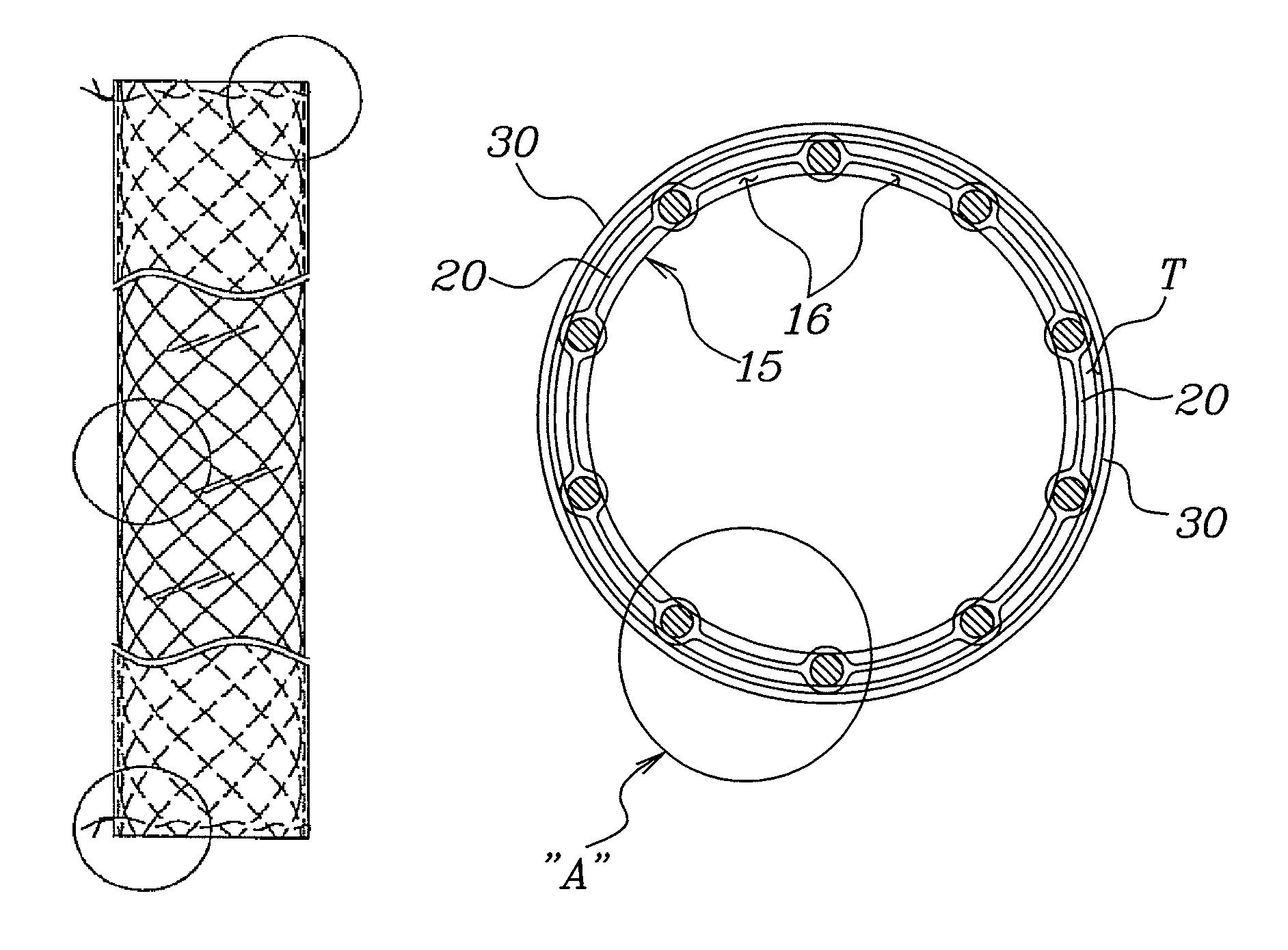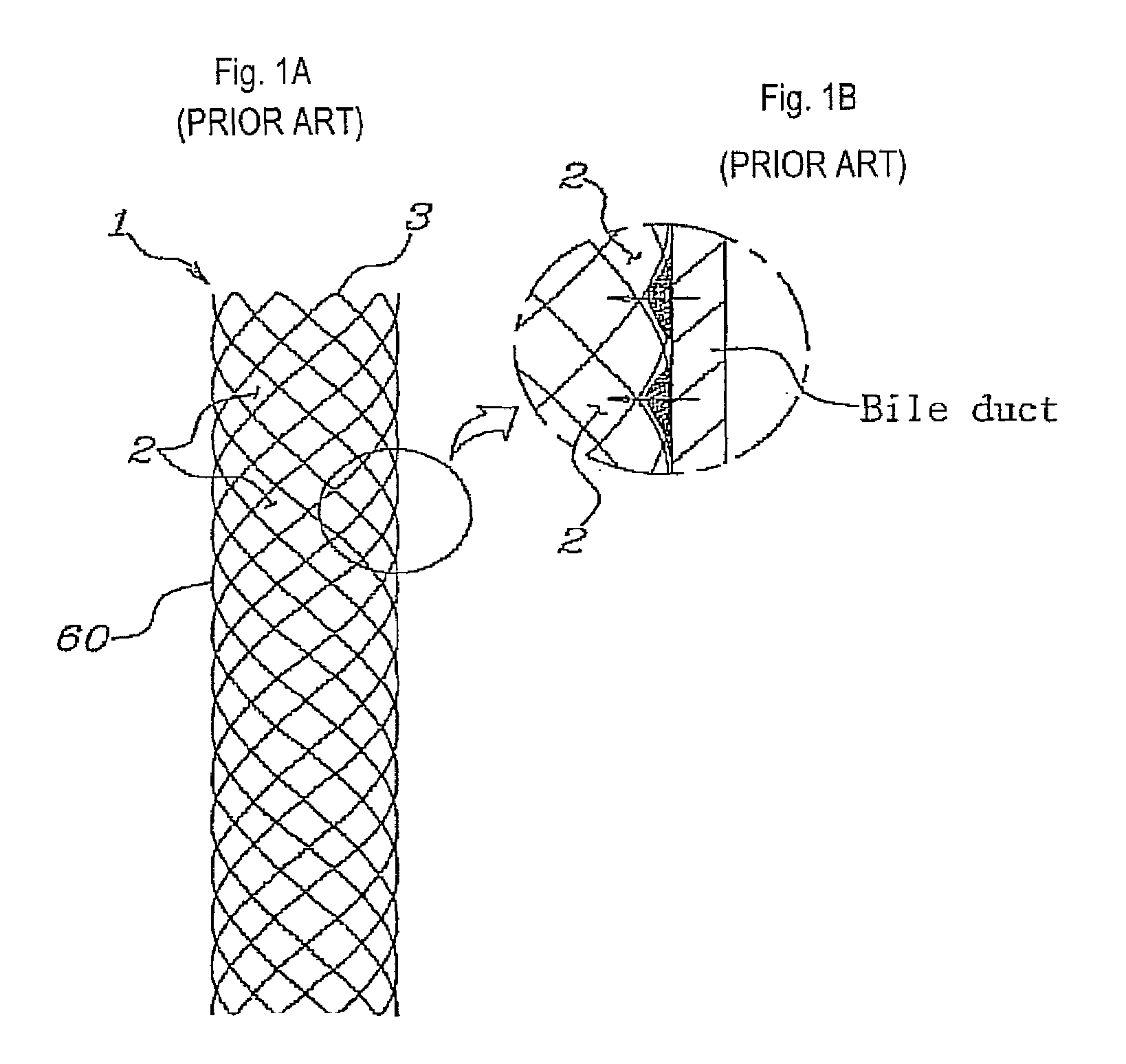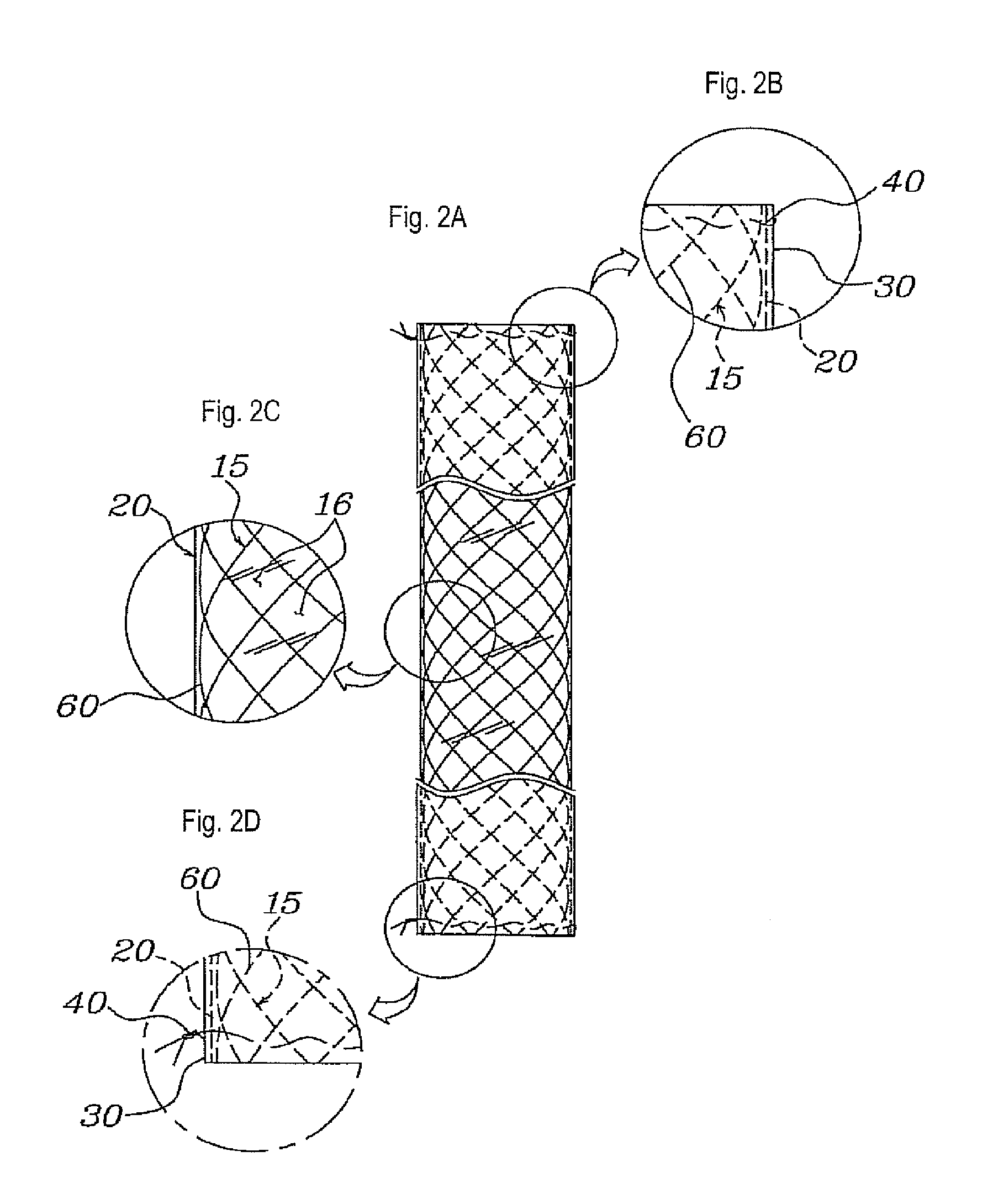Double-tube type stent
a double-tube type, stent technology, applied in the field of stents, can solve the problems of reducing durability, reducing flexibility, and difficult to maintain the stent in the bile duct for a long time, and achieve the effects of preventing bleeding, ensuring safety, and maximum durability and long-term usability
- Summary
- Abstract
- Description
- Claims
- Application Information
AI Technical Summary
Benefits of technology
Problems solved by technology
Method used
Image
Examples
Embodiment Construction
[0024]Reference will now be made in greater detail to a preferred embodiment of the invention, an example of which is illustrated in the accompanying drawings. Wherever possible, the same reference numerals will be used throughout the drawings and the description to refer to the same or like parts.
[0025]An embodiment of the present invention is characterized by a stent having a hollow cylindrical body that has a plurality of rhombic spaces formed by weaving a superelastic shape-memory-alloy wire so as to be crossed.
[0026]As illustrated in FIGS. 2, 3 and 4, according to an embodiment of the present invention, a double-tube type stent has a hollow cylindrical body 15, which has a plurality of rhombic spaces 16 formed by weaving a superelastic shape memory alloy wire 60 so as to be crossed and which is coated with a thin film on an outer surface thereof.
[0027]At this time, the thin film includes a silicon coating layer 20 formed by immersing the cylindrical body 15 into a silicon solut...
PUM
| Property | Measurement | Unit |
|---|---|---|
| superelastic | aaaaa | aaaaa |
| durability | aaaaa | aaaaa |
| flexibility | aaaaa | aaaaa |
Abstract
Description
Claims
Application Information
 Login to View More
Login to View More - R&D
- Intellectual Property
- Life Sciences
- Materials
- Tech Scout
- Unparalleled Data Quality
- Higher Quality Content
- 60% Fewer Hallucinations
Browse by: Latest US Patents, China's latest patents, Technical Efficacy Thesaurus, Application Domain, Technology Topic, Popular Technical Reports.
© 2025 PatSnap. All rights reserved.Legal|Privacy policy|Modern Slavery Act Transparency Statement|Sitemap|About US| Contact US: help@patsnap.com



